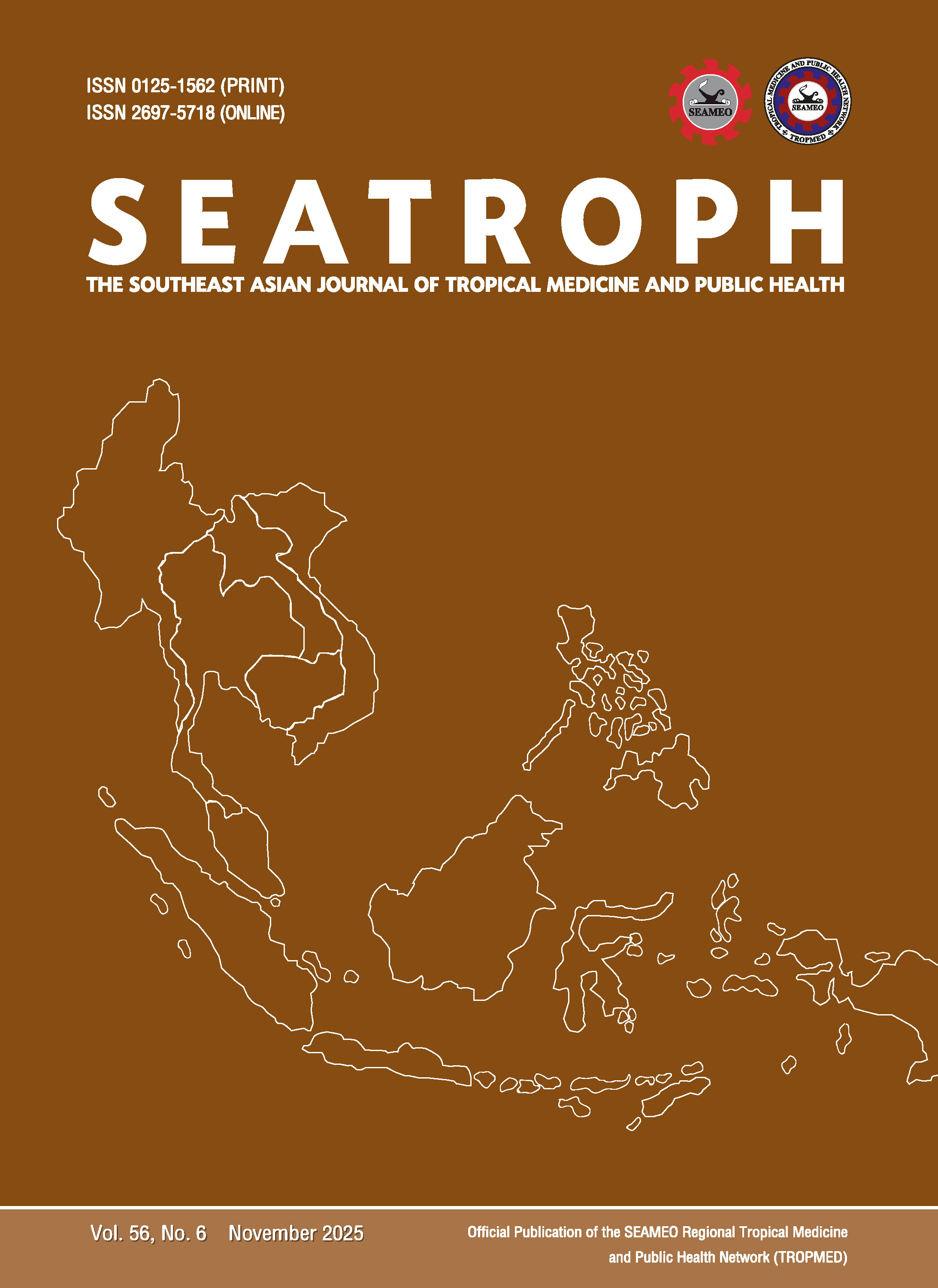MOLECULAR IDENTIFICATION OF MICROSPORIDIA SPECIES AMONG REFUGEE SCHOOL CHILDREN, SELANGOR, MALAYSIA
Keywords:
microsporidia, molecular detection, multiplex PCR, phylogenetic analysis, refugee childrenAbstract
Microsporidia are obligate intracellular spore-forming protozoan parasites in humans. Two species commonly reported as etiology agents in humans are Enterocytozoon bieneusi and Encephalitozoon intestinalis. In Malaysia, microsporidiosis has been reported among hospitalized patients and the rural aboriginal community. However, recent concern has emerged regarding the health of refugee communities in Malaysia, due to their neglect by relevant governmental agencies. This study determined the prevalence of microsporidia among refugee school children in five districts of Selangor. Stool samples (n = 91) were collected and the presence of microsporidia was identified by diagnostic multiplex PCR of the small subunit ribosomal (SSU r) DNA. Ent. bieneusi, Enc. intestinalis and both species was present in 20, 2 and 2%, respectively. Phylogenetic analysis of the SSU rDNA sequences revealed each microsporidia species clustered into a single clade, with that of Ent. bieneusi having 87% similarity to a reference sequence from immunocompromised patients in Kuala Lumpur, while that of Enc. intestinalis a 38% sequence similarity to a reference sequence from diarrheal patient(s) in Pakistan. Thus, we suggest that sensitive and frequent surveillance together with intervention programs of microsporidia infection should be implemented in the marginalized communities in the country to minimize the potential emergence of public health issues.




